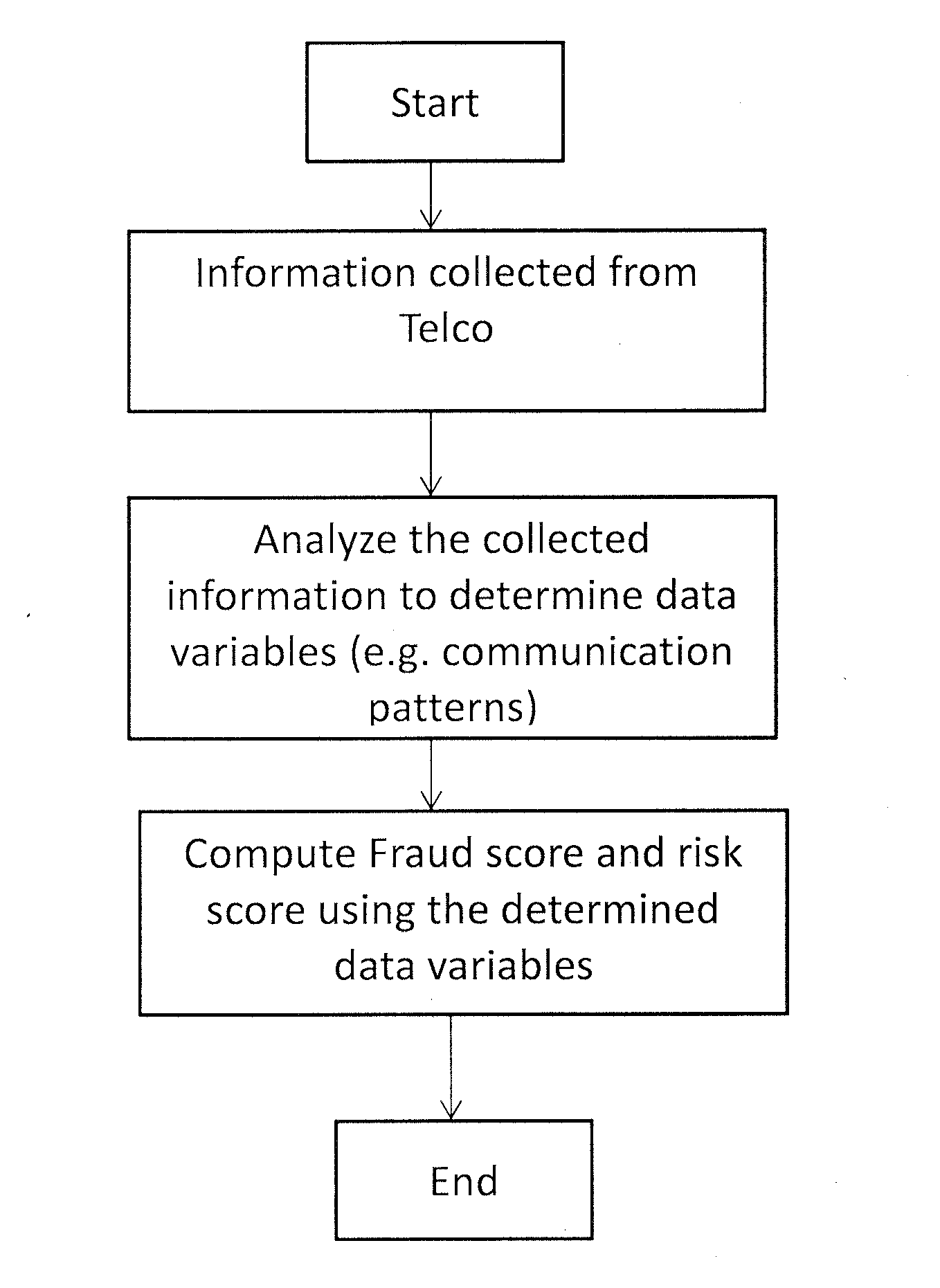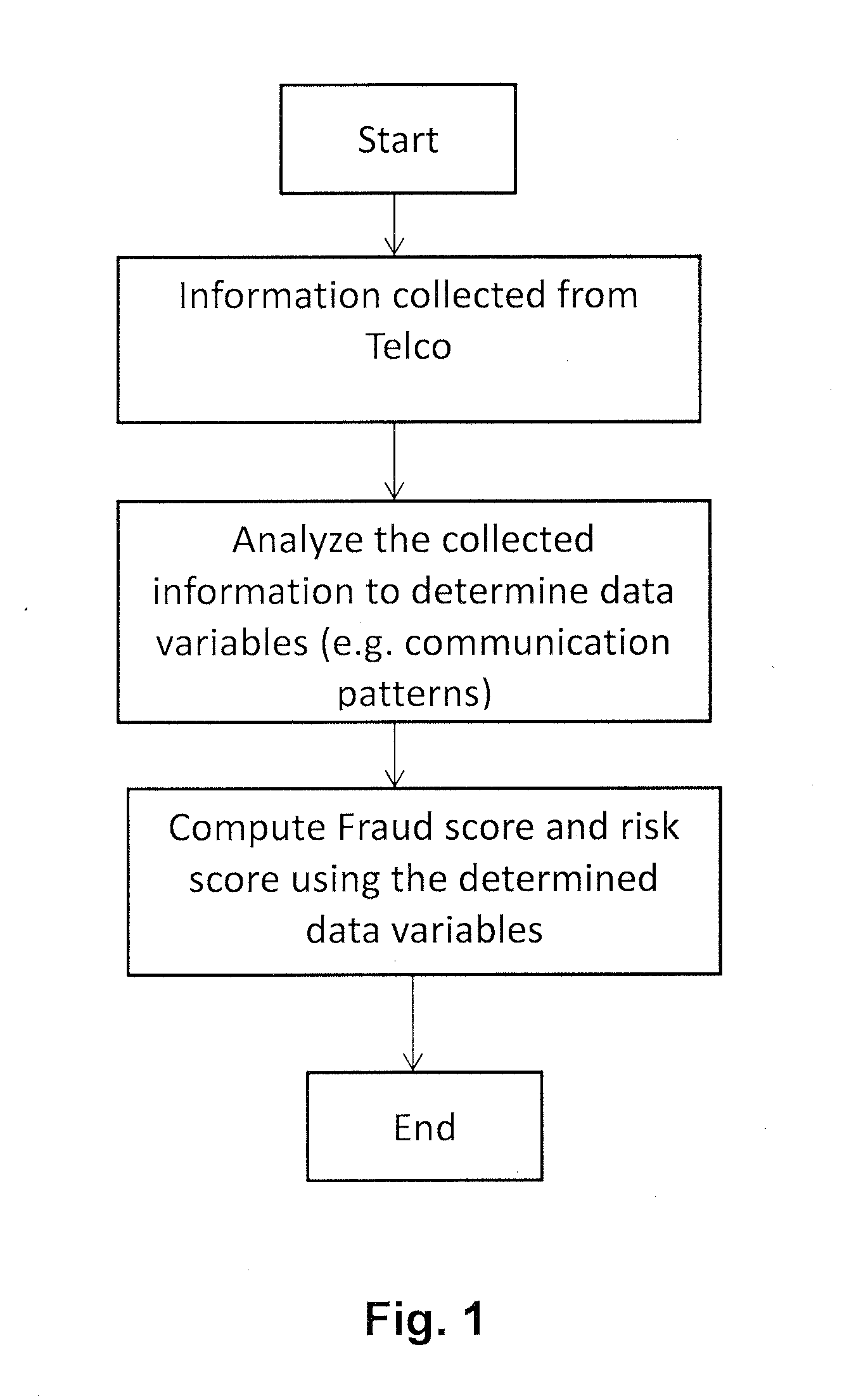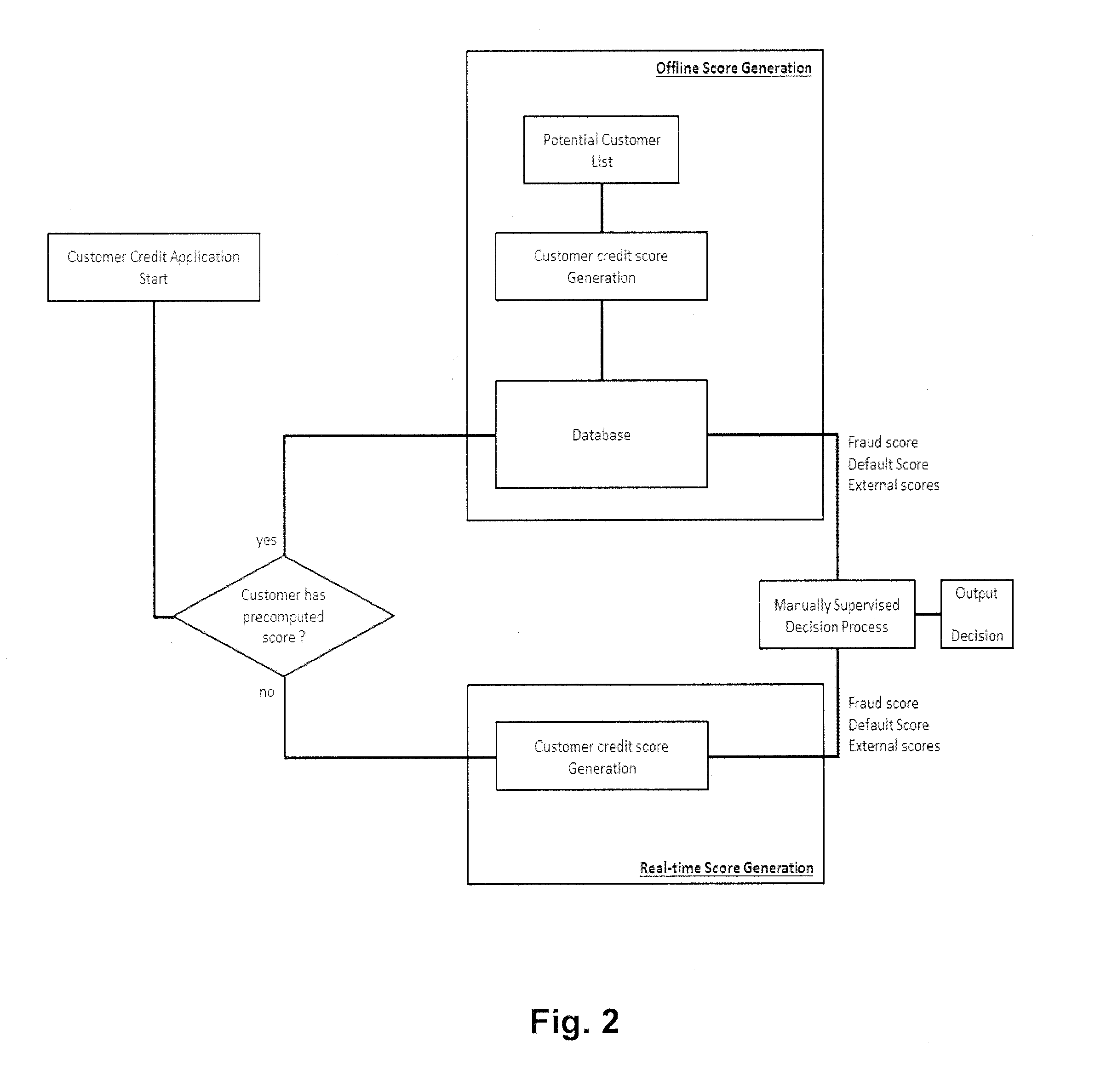Computer-implemented method, a system and computer program products for assessing the credit worthiness of a user
a computer-implemented method and credit-worthiness assessment technology, applied in the field of financial scoring techniques, can solve the problems of not only developing, not easy scoring for a large part of the population, and reducing flexibility and higher cos
- Summary
- Abstract
- Description
- Claims
- Application Information
AI Technical Summary
Benefits of technology
Problems solved by technology
Method used
Image
Examples
Embodiment Construction
[0023]To that end, present invention provides a new method for representing a user into a variable space suitable for creditworthiness assessment solely based on Human Dynamics Data (HDD), which doesn't need to use past financial history (It can use it to improve performance of the method). Such representation allows generating reliable credit scores (e.g. a default risk score and a fraud risk score of said user) using for instance machine learning techniques (parametric and non-parametric). Moreover, because it does not use data from the user's financial history, it has the ability to score a wider range of people than traditional methods, while keeping a similar accuracy level
[0024]Embodiments of the present invention provide according to a first aspect a computer-implemented method for assessing the credit worthiness of a user, preferably with a limited credit worthiness history. According to the proposed method, a data collector unit (e.g. of a Telecommunication operator) collec...
PUM
 Login to View More
Login to View More Abstract
Description
Claims
Application Information
 Login to View More
Login to View More - R&D
- Intellectual Property
- Life Sciences
- Materials
- Tech Scout
- Unparalleled Data Quality
- Higher Quality Content
- 60% Fewer Hallucinations
Browse by: Latest US Patents, China's latest patents, Technical Efficacy Thesaurus, Application Domain, Technology Topic, Popular Technical Reports.
© 2025 PatSnap. All rights reserved.Legal|Privacy policy|Modern Slavery Act Transparency Statement|Sitemap|About US| Contact US: help@patsnap.com



